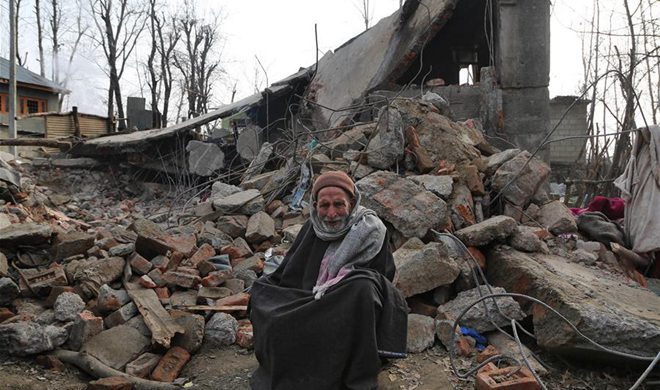WASHINGTON, Dec. 26 (Xinhua) -- Short-term exposures to air pollution were associated with a higher risk of death in older American adults, even at levels well below current U.S. safety standard, a new study said Tuesday.
The study, published in the Journal of the American Medical Association, examined health impacts of fine inhalable particles (PM2.5) and ozone, particularly "warm-season ozone," which occurs from April to September.
"We found that the mortality rate increases almost linearly as air pollution increases," Professor Francesca Dominici, co-director of Harvard University Data Science Initiative and senior author of the study, said in a statement. "Any level of air pollution, no matter how low, is harmful to human health."
Under the National Ambient Air Quality Standards (NAAQS) set by the U.S. Environmental Protection Agency (EPA), long-term exposures to PM2.5 are considered safe if they average 12 micrograms per cubic meter of air (12 mcg/m3) or less per day over the course of a year, while the 24-hour standard is 35 mcg/m3.
For warm-season ozone, there is no annual standard, but the eight-hour standard is 70 parts per billion (ppb).
The researchers assessed daily air pollution exposures using prediction models that provided accurate estimates of PM2.5 and ozone for most of the United States, including unmonitored areas.
They then linked the air pollution data with mortality data from the entire U.S. Medicare population from 2000 through 2012 living in 39,182 zip codes, or 93 percent of all the zip codes in the United States.
During the 13-year study period, 22 million people in the study population died.
The study found that, for each 10 mcg/m3 daily increase in PM2.5 and 10 ppb daily increase in warm-season ozone, the daily mortality rate increased by 1.05 percent and 0.51 percent, respectively.
"While this may seem a small increase, the public health impact is enormous if it's applied to the whole U.S. population of seniors," said the study authors.
For example, an increase of just 1 mcg/m3 in daily PM2.5 over the course of one summer in the U.S. would lead to 550 extra deaths per year and 7,150 extra deaths over the course of the 13-year study period, they said.
An increase of just 1 ppb in daily ozone over the summer would lead to 250 extra deaths per year or 3,250 extra deaths over 13 years.
A June 2017 study by some of the same Harvard researchers found that long-term exposure to air pollution was linked with an increased risk of premature death, even at levels below the national standards for long-term exposures.
"No matter where you live--in cities, in the suburbs, or in rural areas--as long as you breathe air pollution, you are at risk," said Qian Di, lead author of the study and a PhD student in the Department of Environmental Health at Harvard University.

















